21 places in Italy you never thought to visit (but really should)
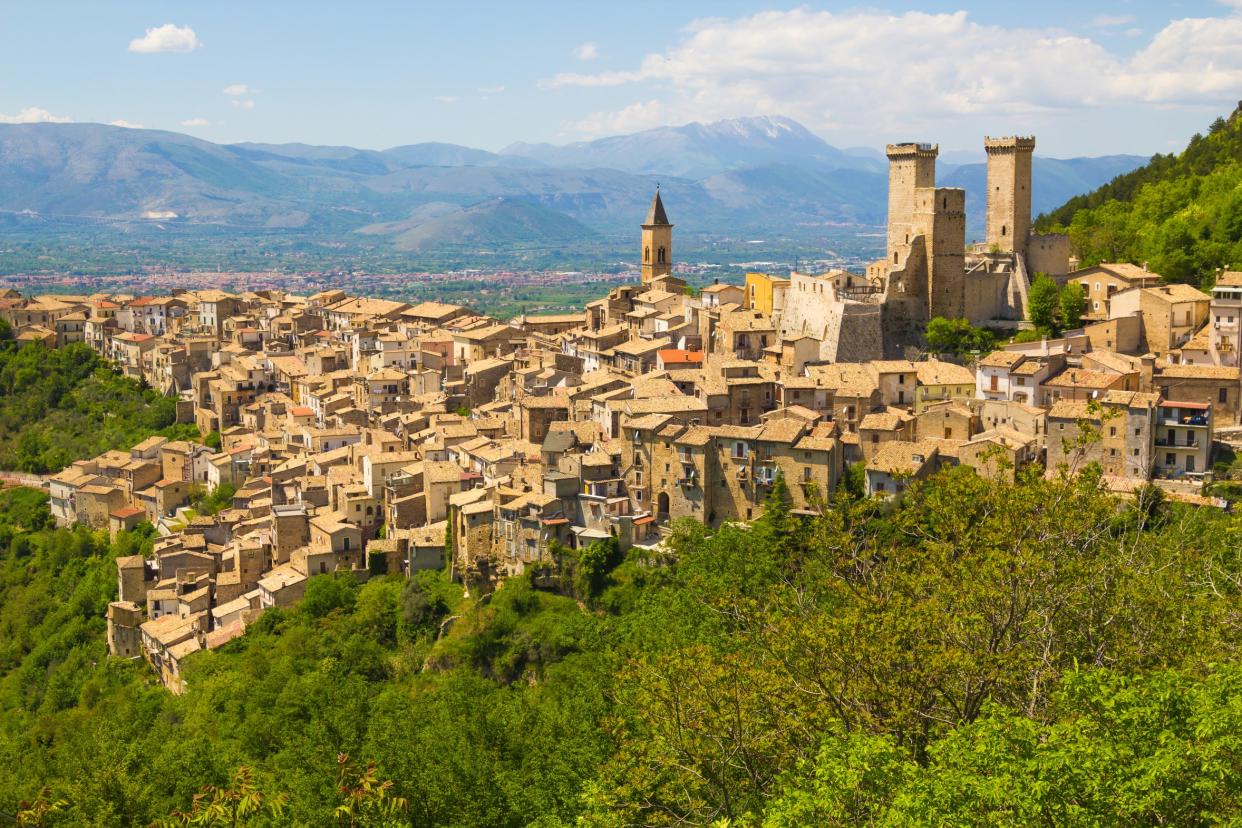
Planning an Italian holiday in 2018 but want to escape the tourist hordes? Then head instead to one of these lesser-known gems.
1. Marina de Pisciotta, Campania
Lee Marshall, author of Telegraph Travel's guides to Rome, Florence, Tuscany and Sicily, recommends this unheralded spot in the Province of Salerno. "Twenty years ago, I promised the friend who told me about Pisciotta and its Marina that I would avoid writing about it," he says. "But surely there must be a statute of limitations on such vows? And in any case, the Pisciottani are so simpatici, and business is still so slow outside of the canonic Italian beach months of July and August, that I can live with the small betrayal.
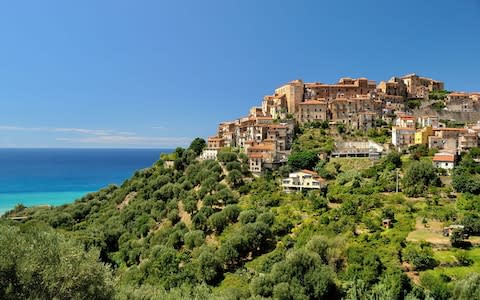
"Pisciotta is the kind of small, southern Italian coastal town that you have a picture of in your head, but often struggle to match in the real world. The old town sits on a hill just back from its seaside frazione or offshoot, Marina di Pisciotta. It's a place of narrow lanes sandwiched between pastel-painted houses, ancient stepped alleyways leading to hidden chapels, small piazzas with their inevitable external fauna of old men in hats playing cards or simply watching the world go by."
Italy best hotels
2. Bergamo, Lombardy
Largely ignored by travellers in favour of nearby Milan, Bergamo is Lombardy's "finest hill town", according to Janette Griffiths, while its Piazza Vecchia is "one of the loveliest" in Italy. The journalist and broadcaster Sian Williams is also a fan: "It's a charming walled city with lovely little winding streets where you can pick up a gelato, and is also the perfect base from which to explore the Lombardy countryside and the Italian lakes. The city and surrounding area are so romantic and just made for a short spring break."
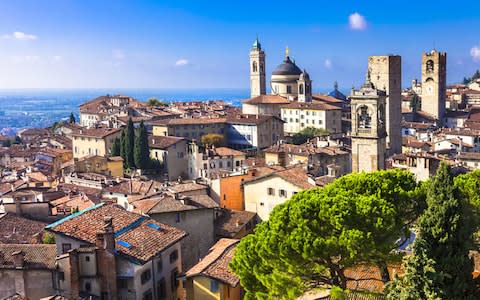
Mantua is another fine option in the region of Lombardy. Two remarkable buildings – the Palazzo Te and Palazzo Ducale – make this the most compelling of northern Italy’s mid-sized towns.
3. Montefalco, Umbria
Tim Jepson, our Umbria expert, recommends this sleepy hill-town. "It's renowned for its views, rare red wine – Sagrantino – and the remarkable Renaissance fresco cycle and other works of art in the San Francesco museum," he says. "Stop by nearby Bevagna, too, for its perfect little main square and its two ancient Romanesque churches."
4. Gabicce Mare, Le Marche
Anne Hanley, author of our Venice guide, advises heading south from La Serenissima to Gabicce Mare. "Italy's Adriatic coast is, on the whole, a very local place: a summer playground for Italian families," she says. "Ranks of colour-coded umbrellas mark the progression from one beach concession to another along interminable stretches of flat white sand; nondescript developments of high-rise hotels occupy the flat shoreline, overlooked by more ancient towns in the hillier hinterland.
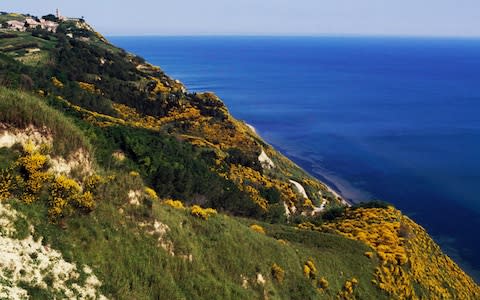
"Gabicce Mare is a delightful exception to this rule. Intrepid visitors wanting more remote sands away from the beach umbrellas, can trek to secluded coves below the nearby hamlets of Fiorenzuola di Focara and Casteldimezzo: it's an abrupt switch from order to wilderness."
5. Portovenere, Liguria
The five Cinque Terre coastal villages to the north are better known, but are also increasingly overrun, making Portovenere (not unlike a sixth Cinque Terre village – but, crucially, with no railway access) a pretty and far more peaceful option, according to Tim Jepson.
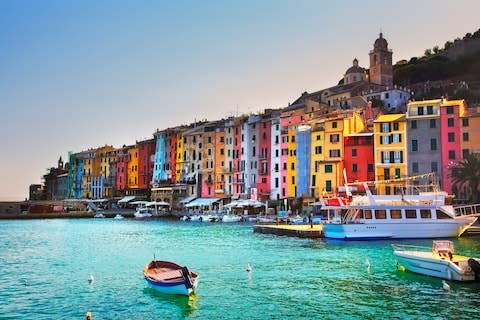
Other uncrowded alternatives to the Cinque Terre are Sestri Levante, a small, sleepy town and Italian family seaside resort with a delightful medieval centre (stay at the Vis à Vis or Miramare hotels) and Tellaro, a village close to Lerici, just south of La Spezia, former haunt of poets Shelley and Bryon.
6. Treviso, Veneto
No-frills flights to Venice often land in Treviso, some 20 miles away. But there's good reason to delay the onward trip, reckons Lee Langley. He adds: "The centre of Treviso is a little walled city, with medieval gates, narrow, cobbled streets of arcaded rose-red brick and stone that twist and turn like dried-out water courses - which is what some of them originally were. Tiny canals run past handkerchief-sized gardens, glide beneath houses, appear at street corners. Gushing millstreams, some with black water-wheels that once had a commercial purpose, now turn lazily, playing a purely decorative role."
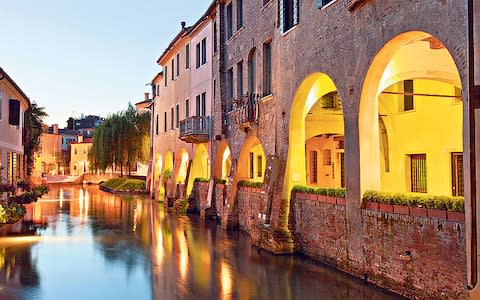
An equally appealing option in the region, an one that attracts a tiny fraction of the crowds that flock to Venice and Verona, is Vicenza, the exquisite little home town of the architect Palladio.
7. Sovana, Tuscany
Tim Jepson explains: "Southern Tuscan towns are all less visited than Siena and the more famous villages to the north. One of the south’s best villages, Sovana – little more than a single street – boasts fine hotels and restaurants, an ancient parish church, and other superb medieval buildings."
See Lee Marshall's Tuscany guide for more inspiration.
8. Lake Iseo, Lombardy
"The least known of the Italian Lakes, Iseo is popular with hikers and is home to Europe’s largest lake island [Monte Isola]," explains Kiki Deere, our Italian Lakes expert.
Annie Deaken adds: "Little known outside Italy, Lake Iseo is smaller than Lake Como but considerably quieter and more charming. With fewer sun-blotched tourists, and situated just north of the cities of Brescia and Bergamo, it is the unsung gem of northern Italy."
Remote Monte Isola, three kilometres in length and with only 2,000 residents and no cars, "has a quiet calm", she adds. "Walk along its cobbled waterside track and admire the blue and white paper flowers that are strung across paths and tied to doorways."
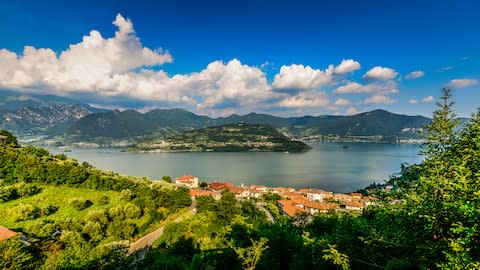
9. Porto Selvaggio, Puglia
"The Salento peninsula in southern Puglia is the Cornwall or the Galicia of Italy: a seagirt place of ancient and insular cultural traditions, not all of them diluted into tourist attractions," says Lee Marshall. "In some Salento villages they still speak Griko, a Greek dialect that may be the only living remnant of Magna Grecia, that swathe of southern Italy colonised by Ancient Greece back when the Romans were still living in huts. Although the Salento is not the undiscovered territory it was 30 years ago, it still seems apt, in this land's end, with its flat inland plain covered in ancient, gnarled olives, that there should be a secret bay with the evocative name of Porto Selvaggio, or 'Wild Harbour'. A few miles west of the pleasant market town of Nardò, this pristine coastal enclave has enjoyed protected-area status since 1980.”
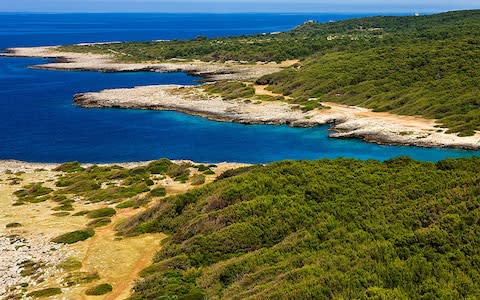
10. Sulmona & Monti della Laga, Abruzzo
"Abruzzo is a region waiting to be discovered," says Tim Jepson. "It combines immense peaks, parks and areas of wilderness – bears and wolves still roam the heights – with unspoilt, old-world towns such as Sulmona, a mountain-ringed throwback to the Italy of the Fifties with a magnificent main square that comes into its own on market days. While many of the Abruzzo’s mountains remain unvisited, Monti della Laga, a remote and beautiful group of peaks close to the Umbria border, is unknown even to most Italians."
11. Matera, Basilicata
Tim Jepson explains: "Around fifty years ago, Matera was one of the poorest towns in western Europe, with some 20,000 people crammed into the sassi, a honeycomb of ancient and wretched cave dwellings that riddled the ravine below the town. Cleared in the Sixties, the caves had remained derelict until recently, but now some 2,000 people have returned, along with cafés, galleries, restaurants and, above all, hotels, sparking a renaissance in Matera’s fortunes.
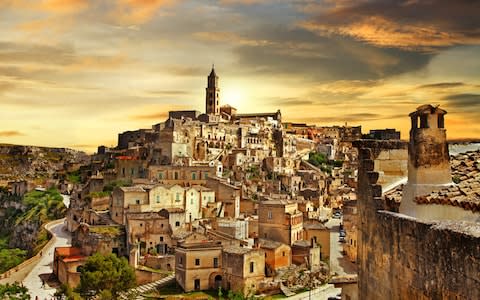
"But even without the caves – which Unesco describes as 'the most outstanding example of a troglodyte settlement in the Mediterranean' – the rest of the town would be an unusual and beautiful place to visit; a glorious, honey-stoned medieval vision of tiny alleys, sleepy squares, and sweeping views over a strangely empty but enchanting landscape.Restaurants here serve traditional food you’ll find nowhere else, and the 150 or more cave churches, hidden among the sassi and the surrounding countryside, contain some of Italy’s oldest frescoes outside the catacombs of Rome."
12. Ravello, Amalfi Coast, Campania
Most visitors to the Amalfi Coast head to the towns of Amalfi and Positano, missing hilltop Ravello, which has the best of the area’s views, hotels and gardens.
"Set like an eagle's nest above the dizzying landscape of the coast, Ravello is the most peaceful and charming resort on the Neapolitan Riviera," says Joanna Symons. "Early summer is the best time to explore its largely traffic-free lanes or to wander among the terraces and pergolas of its elegant gardens, from where there are vertigo-inducing glimpses of the Mediterranean miles below. Greta Garbo, Jacqueline Kennedy and Tennessee Williams all holidayed here, and the place still has an air of restrained glamour."
13. Trieste, Friuli-Venezia Giulia
The Italian port of Trieste bristles with life, has a fascinating history and serves - probably - the finest coffee in the country, according to Helen Pickles. "To discover the secret of a happy life head to Trieste, the Italian port tucked inside the Slovenian border," she adds. "The Triestini embrace life with a passion that is palpable and infectious, if the chatter at evening aperitivo is anything to go by. And at the merest hint of sunshine, Triestini are off to the nearby seaside, Barcola, even in November, and even though it's a concrete strip. "This unsquashable humour is no doubt born of being a frontier city, variously owned or occupied by the Romans, Habsburgs, Mussolini's regime, Germans and Allied Forces, only finally returning to Italy in 1954. The consequence is a glorious jumble of architectural and ethnic influences. In the space of 15 minutes, I came across Serbian Orthodox, Greek Orthodox and Helvetic Evangelist churches, while the city's synagogue is one of the largest in Europe."
European cities
14. Gargano, Puglia
"The spur on the heel of Italy, the Gargano is a national park with long, sandy beaches, great forests of pine and a geographical location that tempers the summer heat with breezes blowing in from the sea on three sides," wrote Paul Lay for Telegraph Travel back in 2005. "Come in August and you'll barely hear an accent other than Italian." A decade on, the region is still barely known outside of Italy, according to Tim Jepson.
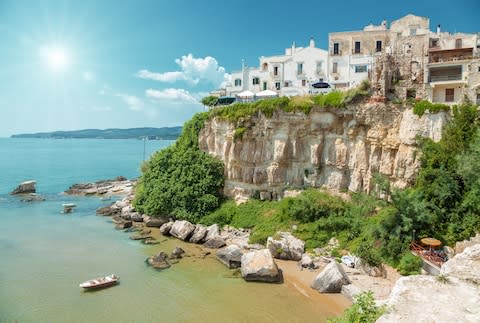
The gateway to Puglia is Bari, served by both Ryanair and easyJet - it's worth a visit in its own right. "Only remembered in Britain as the city where David Platt played after his amazing Italia 90, it's a fascinating city," says Chris Leadbeater. "Scuffed, chaotic, cluttered, but with a beautiful Norman fortress and good restaurants."
15. Ragusa and Cefalù, Sicily
Tim Jepson advises avoiding overcrowded Taormina and instead heading for Ragusa ("one of a coronet of historic little towns – with Modica and Noto – in southeast Sicily known for their food, baroque archicture and surrounding landscapes"), or Cefalù ("Much of the Sicilian coast has been spoiled: not this restrained resort centred on a glorious medieval town known above all for its great Norman cathedral").
He also recommends exploring Le Madonie, a range of wild mountains on the northern coast.
For more on Sicily, see our expert's guide.
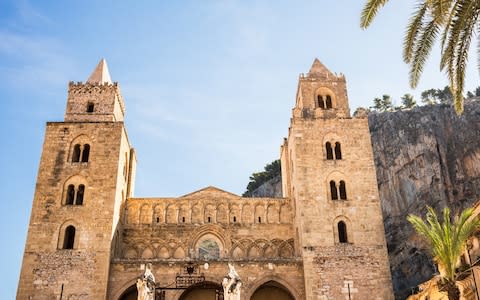
16. The Langhe, Piedmont
"Piedmont is almost equally unknown beyond its ski resorts," says Tim Jepson. "And yet this is a region that can claim to be Italy’s finest gastronomic centre – it was the birthplace of the Slow Food movement – and to have some its loveliest rolling countryside. The two combine to fine effect in the Basso Monferrato region, but even more so in the Langhe hills and the towns of Bra, Alba, Barolo, Barbaresco, and Serralunga. In the south, the Alpi Marittime national park has superb mountain scenery, but barely a visitor."
17. Ravenna, Emilia-Romagna
A small town that like nearby Ferrara and Mantua is off the beaten track, but is equally well worth visiting, not least for its extraordinary Byzantine and medieval mosaics.
"The Unesco-listed Byzantine mosaics of Ravenna are among the wonders of Italy," says Anne Hanley. "They’re even more dazzling when illuminated by night. During the Mosaico di Notte season (late June to early September), four of the Adriatic city’s major sixth- to eighth-century monuments, including San Vitale and the Mausoleum of Galla Placidia, are open for guided tours on Tuesday and Friday evenings from 9pm-11pm. Time your visit to coincide with the feast of Sant’Apollinare, the city’s patron saint, and you’ll see Ravenna come alive with concerts, street-food stalls, fireworks and sound-and-light shows."
The region also can also boast two of the best cities in Italy for a gastronomic break: Parma and Bologna.
18. Marettimo, Aegadian Islands
Another tip from Lee Marshall: “The first time I stayed on the island of Marettimo, the owner of a bar by the dock took me aside. ‘You're not going to write about this, are you?’ he asked. He wasn't threatening, just concerned. ‘We don't mind visitors,’ he explained. ‘But we don't want tourists.’ That was years ago, and since then the word has spread. But the ethos remains the same. This remarkably green outcrop in the Mediterranean off the west coast of Sicily is a place for cultured, long-stay regulars rather than hit-and-run day-trippers.
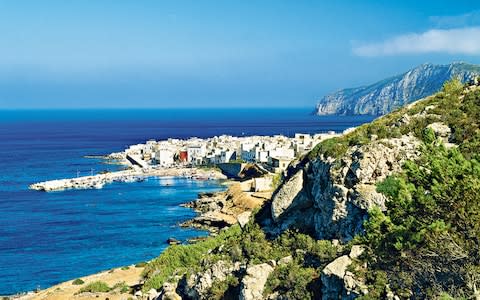
“Car-less, (almost) hotel-less and refreshingly free of the snobbery of other Italian island paradises such as Capri or Pantelleria, Marettimo remains a very special destination for walkers, scuba-divers and sunseekers looking for a relatively unspoilt island, which is nevertheless within easy reach.”
19. Herculaneum and Oplontis, Campania
"The buried city of Pompeii always grabs the headlines — and the tourist hordes," says Mary Beard, the classicist and television presenter. "Those who long to enjoy a glimpse of Ancient Roman life in relative peace and quiet, and without the jostling of fellow visitors, should plan a visit to one of the less well-known Vesuvian sites. Pompeii's 'little sister', the town of Herculaneum (just 10 miles to the north, nearer Naples), almost beats Pompeii for the completeness of its preservation, though it attracts fewer tourists."
The villa of Oplontis, just outside Pompeii, is another lesser-known gem: "It's the size of a palace and about as grand a residence as Roman money could buy. To cap it all, in the back garden there is an Olympic-sized swimming pool."
20. Genoa, Liguria
Chris Leadbeater writes: "The capital of Liguria (visitgenoa.it) wears its Mediterranean heritage with pride. It is still a hard-working seadog, but its Porto Antico (portoantico.it) has been revitalised as an oasis of bars and restaurants, while the wealth it accumulated in the Middle Ages sings in its cluster of Renaissance palaces. The Palazzo Rosso (palazzorosso.museidigenova.it) is among the finest of these gilded shards, home to paintings by Veronese and Van Dyck. Stay at the Hotel Bristol Palace, a 1905 dame."

21. Secret Venice
Venice is no secret, but it is full of quiet corners and unsung attractions if you know where to look. Anne Hanley, our Venice expert, suggests avoiding the crowds by visiting Torcello, once the most populous island on the lagoon, now a sleepy retreat with two handsome churches, and the Museo Querini Stampalia, home to several pieces of fascinating art – including Giovanni Bellini’s mysterious Presentation in the Temple. Watch the video below for more tips.
Jonathan Glancey, meanwhile, advises a tour of the city's "campi" or small squares. "Bathed in sunlight and shadow, the city squares of Venice are a marvel in their own right," he says. "Irregularly planned for the most part, the campi vary from imposing, paved public bays, busy shopping ports and fashionable harbours awash with nightlife, to all but secret coves huddled between gnarled medieval buildings, leaning campanili and hump-backed bridges. Some are favoured by special restaurants or the kind of age-old cafés, delis, pasticceria and quotidian shops selling genuinely useful or wonderful things that have been disappearing from the city as quickly as giant cruise liners and no-frills jets have arrived." Read his guide to the best campi here.
Secret France

